 |
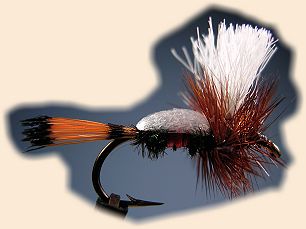 Foam Back Royal Humpy |
|
|
For several years now, I've been in pursuit of the Native
Westslope Cutthroat with the fly rod. I've chased them from
Idaho to Washington and in many different drainages. Some
of which are the Lochsa and Selway Rivers in Northern Idaho.
Also the North Fork of the Coeur d' Alene River (core-duh-lane)
and the St. Joe River, both in Northern Idaho. I've even plied
my hobby at Marshall Lake in North East Washington. From
what scant amount of viable information I've been able to gather,
they prefer a select number of bug imitations. Among their favorites
are Renegades, Royal Coachman and Humpies in red and yellow.
What I've decided to try here is to combine the best of the Royal
Coachman and the Humpy to see what happens. I can't help but
think that this, The Foam Back Royal Humpy, is going to fit the
bill for satisfying the tastes of the Westslope Cutthroat. Here is a
ist of materials and the recipe for that bug. Please note that I used
size 10 hooks for photographic purposes.
Materials:
Thread: Uni 6/0 or 8/0 Black Thread. Tail: Golden Pheasant Tippet. Wing: White Calf Tail. Shell Back: Thin Computer Packing Foam. Under Body: Thin Computer Packing Foam. Thorax: Peacock Herl. Mid Line Belt: Red Floss. Hackle: Brown Hackle Feathers.
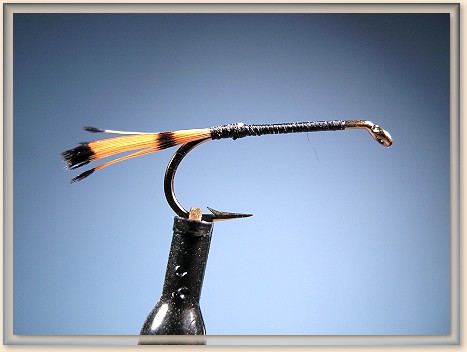 Step 1: Dress the hook and tie in the Pheasant Tail Tippet. 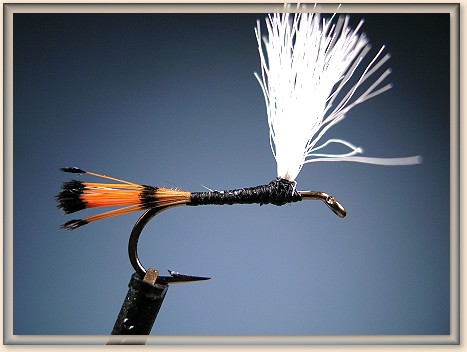 Step 2: Run the thread forward to a point about one third the way back from the eye of the hook to the point of the barb. At that point tie in a moderate amount of Calf Tail. Post it up, and split it into wings that are erect and not spinner style. Leave plenty of wing material for trimming later on.
 Step 3: Run the thread back to where the tail is tied in and tie in enough Computer Packing Foam to make the shell back with enough left over for a handle to maneuver it. Then dub a plump underbody of Computer Packing Foam.
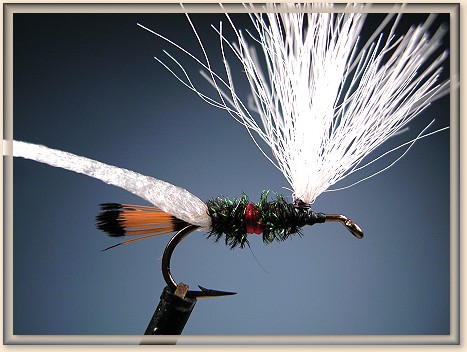 Step 4: Now it's time for the Royal Coachman body. Run the thread back to where you tied in the shell back and tie in the Peacock Herl. Twisting the herl around the thread to make a herl rope, and using the rotary function of your vise (not necessary but really handy) run the herl rope forward to where you want to tie in the Red Floss. Tie the remainder of the herl down and leave it there. Tie in the floss and make 2-3 wraps forward and tie it off. Then continue the herl to a point just short of the wing post, and tie it off and trim the ends.
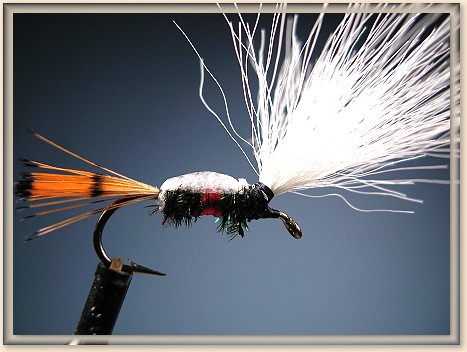 Step 5: Using the extended length of the shell back as a handle, pull it forward gently and tie it down just behind the wing post and trim.
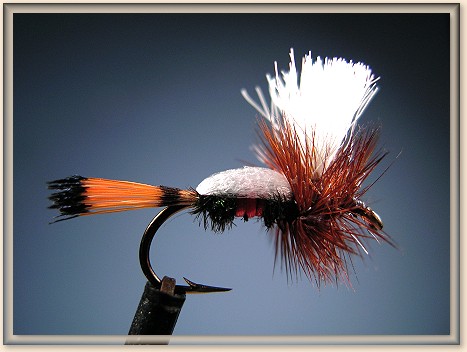 Step 6: Tie in the Brown Hackle and make 3-4 turns behind the wing post, and 3-4 turns in front of the wing post, then tie it off and trim it. Next, build a moderate head, whip finish and cement. Now it's time to trim the wings. Gather them together and pull them gently up. Cut them to 2 times the hackle height. They will drop back a little, so make compensation for that. The Finished Fly
About Lotech JoeI've been a member of FAOL since the year 2000. I've been to a few Fish-In gatherings including once to the Central Washington Fish-In, and 3 times to the Idaho Fish-In. I've also been to a couple of gathering at Rocky Ford Creek in Central Washington on New Year's Day. I've met many people from FAOL and thoroughly enjoyed the company of every one of them. I had the privilege of meeting (in person) Al Campbell, and he for one, has prompted me to try new and different things in fly tying. I work as a warehouseman and look forward to retiring in 2012. I tie flies, furl my own leaders and build fly rods for enjoyment, not profit.
For more great flies, check out: Beginning Fly Tying, Intermediate Fly Tying and Advanced Fly Tying.
|